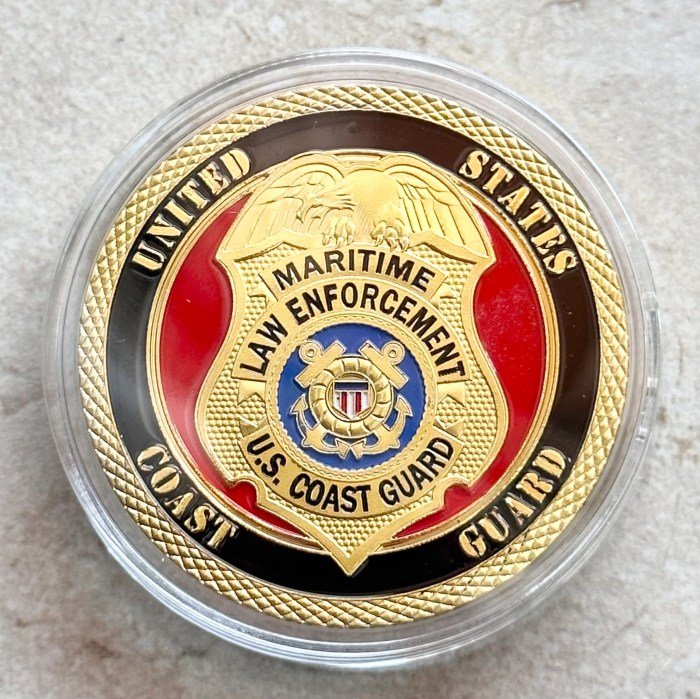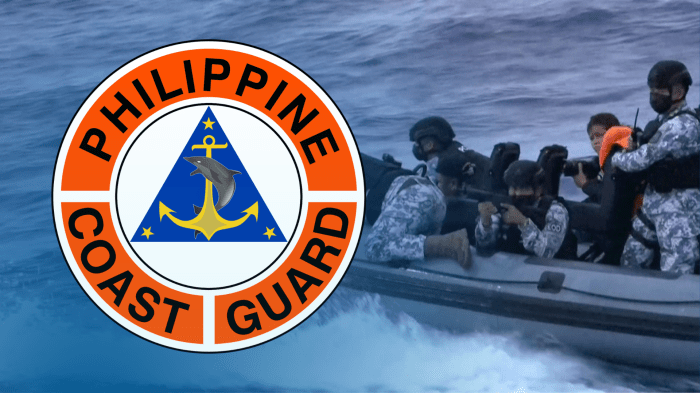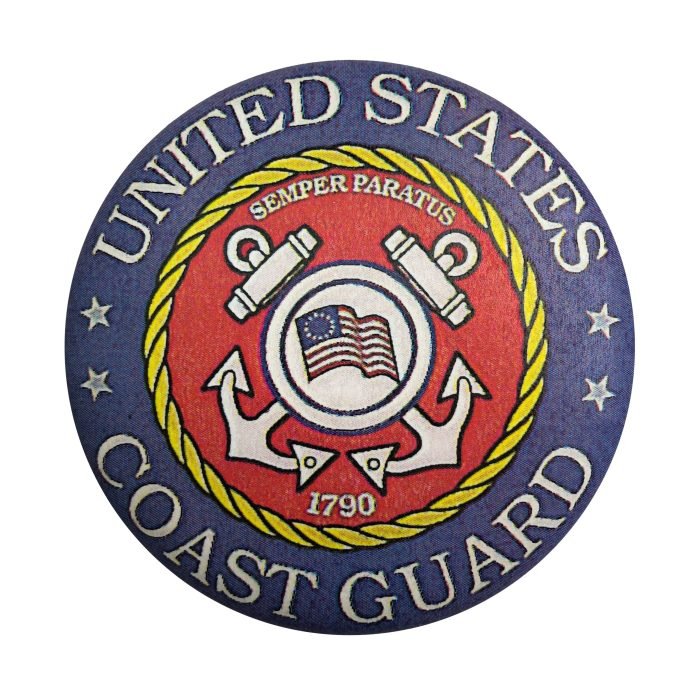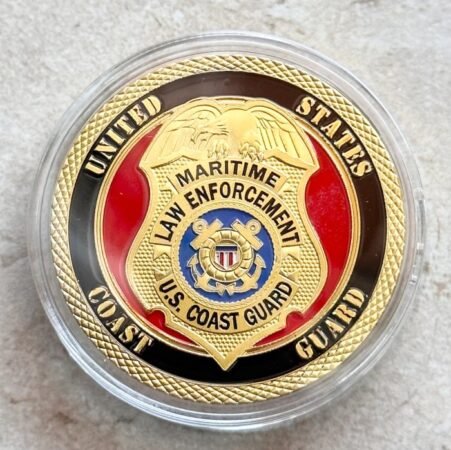
The United States Coast Guard plays a vital role in maritime law enforcement, a complex field demanding specialized skills and unwavering dedication. This exploration delves into the multifaceted world of Coast Guard operations, examining their responsibilities, the symbolism embedded in their badges, and the powerful impact of visual representation through platforms like Pinterest. We will uncover the history and evolution of Coast Guard insignia, highlighting their significance and the evolving technologies that support modern maritime law enforcement.
From the challenges faced by officers at sea to the strategic use of visual media for recruitment and public engagement, this analysis provides a comprehensive overview of the Coast Guard’s critical contributions to maritime security and national interests. We will also examine how public perception is shaped by media portrayals and explore the ethical considerations inherent in this critical field.
Maritime Law Enforcement Roles and Responsibilities

Coast Guard personnel play a multifaceted role in maintaining maritime security and upholding the rule of law at sea. Their responsibilities extend far beyond simple search and rescue operations, encompassing a wide range of law enforcement activities crucial for national and international security. Understanding their diverse roles and the legal framework governing their actions is essential to appreciating the complexity of their mission.
Maritime law enforcement is a core function of coast guard agencies worldwide. Their authority stems from national and international maritime law, granting them extensive powers to board vessels, conduct inspections, and apprehend individuals suspected of violating maritime regulations. These powers are often balanced against the need to respect individual rights and due process, requiring careful training and adherence to strict operational protocols.
Diverse Roles of Coast Guard Personnel in Maritime Law Enforcement
Coast Guard officers engage in a variety of law enforcement activities. These include, but are not limited to, combating drug trafficking, human smuggling, illegal fishing, and piracy. They conduct routine patrols to deter illegal activities, respond to emergencies, and enforce environmental protection laws. Specialized units may focus on counter-terrorism operations, port security, or search and rescue in hazardous conditions. The specific roles vary depending on the coast guard’s mission priorities and the geographic area of operation. For example, a coast guard operating in a region known for drug trafficking will likely have a higher proportion of personnel dedicated to drug interdiction compared to a coast guard primarily focused on search and rescue.
Legal Authorities and Powers Vested in Coast Guard Officers
Coast Guard officers possess significant legal authority derived from national legislation and international treaties. This authority allows them to board and inspect vessels suspected of violating maritime laws, seize contraband, make arrests, and conduct investigations. The specific powers vary by jurisdiction, but generally include the authority to: stop and board vessels, conduct searches and seizures, make arrests for violations of maritime law, and enforce environmental regulations. These powers are subject to legal constraints and safeguards to protect individual rights. For example, before boarding a vessel, officers typically need reasonable suspicion of a violation, and searches must be conducted in accordance with established legal procedures.
Comparison of Coast Guard Responsibilities with Other Maritime Law Enforcement Agencies
While coast guards share some responsibilities with other maritime law enforcement agencies, such as customs and border protection, their roles often differ in scope and focus. Coast guards typically have broader responsibilities, encompassing search and rescue, environmental protection, and maritime safety alongside law enforcement. Other agencies, such as customs, may focus primarily on border security and customs enforcement. For instance, while both the coast guard and customs agencies might intercept a vessel involved in smuggling, the coast guard might also be responsible for ensuring the safety of the vessel and its crew after the interception, whereas customs would primarily focus on the legal aspects of the seizure and the prosecution of the offenders. The division of responsibilities varies considerably across different nations.
Challenges Faced by Coast Guard Officers in Enforcing Maritime Laws
Enforcing maritime law presents unique challenges. These include vast and unpredictable operating environments, limited resources, the transnational nature of many maritime crimes, and the difficulty of pursuing offenders across international borders. Furthermore, coast guard officers often face dangerous conditions, including severe weather, encounters with armed criminals, and the risks associated with boarding vessels. Technological advancements in smuggling techniques and the increasing sophistication of criminal organizations also pose significant challenges, requiring continuous adaptation and investment in advanced technologies and training. The sheer size of the maritime domain makes effective patrol and surveillance extremely difficult, requiring efficient resource allocation and strategic partnerships with other agencies.
Coast Guard Badges and Insignia
Coast Guard badges and insignia are more than just decorative elements; they represent years of service, dedication, and the unique roles within the organization. They are symbols of authority, pride, and a shared identity amongst Coast Guard personnel, reflecting their history and evolving missions. Understanding these badges provides insight into the rich tapestry of the Coast Guard’s heritage and its multifaceted operations.
Coast Guard Badge Types and Their Significance
The following table details various Coast Guard badges and their associated meanings. The specific badges awarded vary depending on rank, specialty, and achievements within the service.
| Badge Type | Description | Meaning/Symbolism | Historical Context |
|---|---|---|---|
| Officer’s Badge | Typically features a shield or eagle design, often incorporating the Coast Guard emblem. Variations exist depending on rank. | Represents authority, leadership, and responsibility within the Coast Guard. The specific design elements often reflect the branch of service or specialized unit. | The design has evolved over time, reflecting changes in the Coast Guard’s mission and visual identity. Early designs were simpler, while modern versions incorporate more intricate detail. |
| Enlisted Personnel Badge | Usually simpler in design than officer’s badges, often featuring the Coast Guard emblem or a related symbol. Specific designs may indicate a particular rating or specialty. | Represents dedication and service within the enlisted ranks of the Coast Guard. | Similar to officer badges, enlisted badges have undergone stylistic changes over time, reflecting evolving design aesthetics and the Coast Guard’s evolving identity. |
| Special Duty Badges | Awarded for specialized training, expertise, or accomplishments in specific areas, such as aviation, diving, or law enforcement. These badges often feature unique imagery relating to the specialty. | Recognizes exceptional skill and proficiency in a particular field. | The introduction of these badges reflects the increasing specialization within the Coast Guard. As new technologies and operational needs emerged, so too did the need for specialized recognition. |
| Commendation Medals and Ribbons | While not strictly badges, these are important insignia worn to denote awards and commendations for exemplary service, bravery, or achievement. | Represent recognition of outstanding performance and contributions to the Coast Guard. | The designs and types of awards have changed over time, reflecting changing values and priorities within the organization. |
Materials and Craftsmanship of Coast Guard Badges
Coast Guard badges are typically crafted from high-quality materials to ensure durability and longevity. Metals such as sterling silver or gold are frequently used, ensuring the badges retain their appearance and symbolic weight over many years of wear. The manufacturing process often involves intricate techniques such as die-striking or casting, resulting in sharply defined details and a high level of finish. Enameling is frequently used to add color and enhance the design’s visual appeal. The quality of the materials and craftsmanship reflects the importance and prestige associated with the badges.
Evolution of Coast Guard Badges Over Time
The design of Coast Guard badges has undergone significant changes throughout its history, reflecting evolving aesthetics, technological advancements, and changes in the organization’s mission. Early badges were simpler, often featuring basic emblems or seals. As the Coast Guard’s roles and responsibilities expanded, so too did the complexity and detail of its badges. For instance, the incorporation of aviation-related imagery reflects the increasing importance of air operations, while the addition of specialized duty badges underscores the growing specialization within the service. These changes demonstrate a continuous adaptation of the visual identity to align with the evolving nature of the Coast Guard’s operations.
Timeline of Coast Guard Badges and Insignia
Creating a comprehensive timeline requires extensive research into archival records and historical documents. However, a general overview indicates that significant design changes generally corresponded with major shifts in the Coast Guard’s mission and organizational structure, such as periods of war or significant technological advancements. Detailed records of specific design changes and their dates would need to be sourced from the official Coast Guard archives or historical societies specializing in maritime history.
Pinterest and Visual Representation of Maritime Law Enforcement
Pinterest, with its visually driven platform, offers a unique opportunity to showcase the diverse and often unseen work of the Coast Guard. By employing compelling imagery and concise narratives, the Coast Guard can effectively communicate its mission, values, and impact to a broader audience, fostering stronger public support and attracting potential recruits. This section will explore the effective use of visual media on Pinterest to achieve these goals.
Effective visual storytelling on Pinterest is crucial for conveying the complexities of maritime law enforcement. Images should be high-quality and emotionally resonant, capturing the dedication, skill, and challenges faced by Coast Guard personnel. Detailed captions should provide context and humanize the stories behind the images, building a connection with the viewer.
Pinterest Image Descriptions for Coast Guard Operations
The following examples illustrate how to create engaging Pinterest image descriptions for various Coast Guard operations. Each description combines visual details with narrative elements to create a compelling story.
* Image 1: A Coast Guard helicopter hovering over a distressed sailboat. Description: “Responding to a mayday call! Our aircrews provide critical search and rescue capabilities, ensuring the safety of mariners in distress. This image captures the urgency and precision of a rescue operation off the coast of [Location]. #CoastGuardRescue #SAR #MaritimeSafety”
* Image 2: Coast Guard personnel assisting with a drug seizure. Description: “Protecting our nation’s borders. Coast Guard law enforcement officers work tirelessly to combat illegal activities at sea, safeguarding our communities from the dangers of drug trafficking. This image depicts a recent successful interdiction of [Type of drug] off the coast of [Location]. #CoastGuardLawEnforcement #DrugInterdiction #NationalSecurity”
* Image 3: A Coast Guard cutter participating in a joint exercise with other agencies. Description: “Building partnerships for a safer maritime environment. The Coast Guard collaborates with numerous agencies to enhance maritime security and respond effectively to complex situations. This image shows a joint exercise with [Partner Agency] focused on [Type of exercise]. #CoastGuardPartnerships #MaritimeSecurity #Teamwork”
* Image 4: Coast Guard personnel conducting environmental protection efforts, such as an oil spill response. Description: “Protecting our oceans. The Coast Guard plays a vital role in environmental protection, responding to oil spills and other marine pollution incidents. This image shows our crews working diligently to contain an oil spill, minimizing environmental damage. #CoastGuardEnvironmentalProtection #OilSpillResponse #OceanConservation”
* Image 5: A Coast Guard member mentoring a young person during a community outreach program. Description: “Investing in our future. The Coast Guard is committed to community engagement and outreach, inspiring the next generation of maritime professionals. This image shows a Coast Guard member mentoring a young person interested in a maritime career. #CoastGuardCommunityOutreach #STEM #FutureLeaders”
Impact of Visual Media on Public Perception of Maritime Law Enforcement
Visual media significantly shapes public perception of maritime law enforcement. Positive and impactful images can humanize Coast Guard personnel, highlighting their dedication and bravery. Conversely, negative or poorly framed images can create misconceptions or fuel negative stereotypes. Strategic use of visual media can foster public trust and understanding of the Coast Guard’s vital role. For example, showcasing successful rescue operations can highlight the life-saving work of the Coast Guard, fostering public appreciation and support. Conversely, focusing solely on enforcement actions might inadvertently create a perception of the Coast Guard as overly punitive rather than protective.
Effective Use of Visual Media to Communicate the Importance of Coast Guard Work
To effectively communicate the importance of Coast Guard work, visual media should focus on storytelling, highlighting both the challenges and the rewards of the job. This can include showcasing the diversity of Coast Guard operations, from search and rescue to environmental protection and law enforcement. Using a variety of visual formats, such as photos, videos, and infographics, can also help maintain audience engagement and cater to different preferences. Moreover, featuring the human element – the faces and stories of Coast Guard personnel – can create a personal connection with the audience and build empathy for their work.
Pinterest as a Tool for Recruitment and Public Engagement
Pinterest can be a powerful tool for Coast Guard recruitment and public engagement. Its visual nature allows for showcasing the exciting and rewarding aspects of a Coast Guard career, attracting potential recruits from diverse backgrounds. By creating visually appealing boards dedicated to specific Coast Guard roles and missions, the Coast Guard can provide potential recruits with a comprehensive understanding of the career opportunities available. Furthermore, using Pinterest for public engagement allows the Coast Guard to share its story, connect with communities, and build a strong public image. Regularly posting engaging content, such as photos and videos of Coast Guard operations and personnel, can foster a sense of community and strengthen public support for the organization.
Maritime Law Enforcement Operations and Technologies
Maritime law enforcement operations are complex and demanding, requiring a sophisticated blend of traditional methods and cutting-edge technologies to maintain safety and security at sea. The effective use of these technologies and methods allows coast guard agencies to respond efficiently to a wide range of threats, from smuggling and illegal fishing to search and rescue operations and environmental protection. The integration of data analysis further enhances operational effectiveness, allowing for proactive strategies rather than simply reactive responses.
Modern maritime law enforcement relies heavily on advanced technologies to enhance surveillance, detection, and response capabilities. These tools significantly improve situational awareness, allowing for quicker and more effective interventions. The contrast between traditional and modern approaches highlights a shift from largely reactive patrols to proactive, data-driven strategies.
Technologies Employed in Maritime Law Enforcement
The Coast Guard utilizes a diverse array of technologies to carry out its maritime law enforcement duties. These technologies significantly enhance the efficiency and effectiveness of operations, providing improved situational awareness and enabling more decisive action.
Radar systems, for example, provide long-range detection of vessels, even in low visibility conditions. Sonar technology allows for underwater surveillance, detecting submerged objects and potentially identifying illegal activities such as smuggling or the presence of hidden compartments. Unmanned aerial vehicles (UAVs or drones) offer a flexible and cost-effective method for aerial surveillance, providing high-resolution imagery and real-time video feeds of suspect vessels or areas of interest. Satellite imagery plays a crucial role in monitoring large areas, providing valuable intelligence for identifying potential threats and planning operations. Thermal imaging cameras detect heat signatures, aiding in the detection of vessels attempting to evade detection at night or in poor weather conditions. Finally, advanced communication systems ensure seamless coordination between vessels, aircraft, and shore-based command centers, enabling rapid response to incidents.
Comparison of Traditional and Modern Methods
Traditional maritime law enforcement relied heavily on visual observation, physical patrols, and basic communication systems. Response times were often slower, and detection capabilities were limited by the range of vision and the speed of vessels. Modern methods, however, leverage advanced technologies such as satellite imagery, radar, sonar, and drones to enhance situational awareness and response capabilities. This allows for proactive surveillance, quicker response times, and a more comprehensive approach to maritime security. For instance, instead of relying solely on chance encounters, modern methods allow for the targeting of specific vessels or areas based on intelligence gathered from various sources. This shift from reactive to proactive enforcement has significantly improved the effectiveness of maritime law enforcement.
Data Analysis in Maritime Law Enforcement
Data analysis plays a critical role in supporting maritime law enforcement strategies. By collecting and analyzing data from various sources—including radar tracking, vessel identification systems, satellite imagery, and intelligence reports—coast guard agencies can identify patterns, predict potential threats, and develop proactive strategies. For example, analyzing vessel traffic patterns can help identify unusual activity that might indicate smuggling or other illegal activities. This data-driven approach allows for the optimization of patrol routes, the prioritization of resources, and the development of targeted enforcement strategies, leading to more effective outcomes. Predictive policing techniques, based on historical data and trend analysis, can help anticipate potential hotspots for illegal activity, allowing for preemptive measures to be taken.
International Cooperation in Maritime Security
International cooperation is essential in addressing the multifaceted challenges to maritime security. Many threats, such as drug trafficking, human smuggling, and illegal fishing, transcend national borders, requiring coordinated efforts among multiple countries. International agreements, information sharing, and joint operations are crucial for effective enforcement. Organizations such as the International Maritime Organization (IMO) play a vital role in establishing international standards and promoting collaboration among nations. Joint patrols and information-sharing agreements allow coast guard agencies to work together to combat transnational crime and protect shared maritime resources. The sharing of intelligence and best practices strengthens the overall effectiveness of maritime law enforcement globally, improving the safety and security of international waters.
Public Perception and Media Portrayal

The Coast Guard’s public image is significantly shaped by media portrayals, ranging from dramatic rescue scenes to less visible but equally important law enforcement activities. These portrayals influence public understanding of the Coast Guard’s role, capabilities, and the challenges faced by its personnel. A balanced and accurate representation is crucial for maintaining public trust and support.
Media portrayals often focus on high-stakes rescues and dramatic interventions, creating a perception of the Coast Guard as primarily a heroic rescue service. While rescue operations are a vital part of their mission, this emphasis can overshadow the significant contributions of Coast Guard law enforcement personnel in combating illegal activities at sea. This skewed focus can lead to misunderstandings about the scope of the Coast Guard’s responsibilities and the complexities of their daily work.
Common Misconceptions about Maritime Law Enforcement
The concentration on dramatic rescues in media narratives frequently overshadows the substantial role of Coast Guard law enforcement. Many believe the Coast Guard’s work is solely focused on search and rescue, overlooking their extensive responsibilities in drug interdiction, migrant smuggling prevention, and the enforcement of maritime regulations. This misconception diminishes the importance of their law enforcement contributions to national security and economic stability. Another misconception is that Coast Guard law enforcement officers operate only in calm seas. In reality, they face challenging weather conditions, long hours at sea, and potential dangers from criminals and hazardous environments.
A Typical Day in the Life of a Coast Guard Law Enforcement Officer
A typical day for a Coast Guard law enforcement officer might begin with a briefing on current operations and intelligence reports. This is followed by patrols, either by boat or aircraft, to monitor maritime traffic and enforce regulations. This could involve inspecting vessels for compliance with safety and environmental standards, searching for contraband, or responding to distress calls. They might spend hours at sea in challenging conditions, navigating through rough waters and maintaining constant vigilance. A significant part of their day involves meticulous documentation of their activities, including detailed reports and evidence collection. Evenings often involve processing collected evidence and preparing reports for submission. The unpredictable nature of maritime emergencies can disrupt even the most carefully planned schedule, requiring quick response and decisive action.
Ethical Considerations Surrounding Maritime Law Enforcement and Media Coverage
Ethical considerations are paramount in maritime law enforcement. Officers must balance the need to uphold the law with the respect for individual rights and due process. Media coverage presents unique ethical challenges. While the public has a right to know about Coast Guard activities, the media’s portrayal should not compromise ongoing investigations, endanger personnel, or unfairly prejudice individuals. Striking a balance between transparency and protecting operational security is essential. Furthermore, the potential for sensationalism in media reporting can distort the reality of maritime law enforcement, creating a skewed public perception. Accurate and responsible reporting is crucial to ensure a fair and informed understanding of the Coast Guard’s work.
Last Recap

Ultimately, understanding the Coast Guard’s role in maritime law enforcement requires appreciating the blend of tradition and innovation that defines their work. The visual representation of this commitment, from the carefully crafted badges to the compelling imagery shared on platforms like Pinterest, serves to enhance public understanding and appreciation for their service. The continued evolution of technology and international cooperation will remain crucial in tackling the ever-changing challenges of maritime security, ensuring the safety and prosperity of our nation’s waters.
Questions and Answers
What materials are typically used in making a Coast Guard badge?
Coast Guard badges are often crafted from high-quality metals like sterling silver or gold, sometimes incorporating enamel for color and detail.
How can I obtain a Coast Guard badge?
Coast Guard badges are awarded to personnel upon completion of specific training or achieving certain ranks. They are not generally available for purchase by the public.
What is the significance of the Coast Guard emblem?
The Coast Guard emblem typically features a representation of the eagle, symbolizing strength and national pride, along with other elements reflecting their mission of maritime safety and security.
Are there different types of Coast Guard badges for different roles?
Yes, different badges may signify specialized units, qualifications, or achievements within the Coast Guard.


